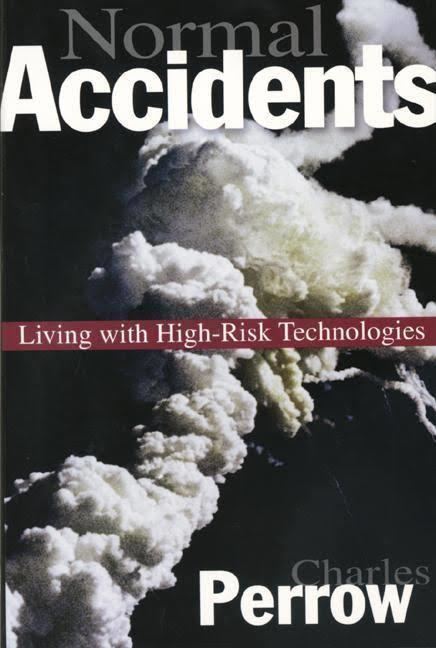Publisher Basic Books ISBN 978-0-691-00412-9 | Publication date 1984 Originally published 1984 | |
 | ||
Similar Charles Perrow books, Accident books | ||
Normal Accidents: Living with High-Risk Technologies is a 1984 book by Yale sociologist Charles Perrow, which provides a detailed analysis of complex systems conducted from a social sciences perspective. It was the first to "propose a framework for characterizing complex technological systems such as air traffic, marine traffic, chemical plants, dams, and especially nuclear power plants according to their riskiness". Perrow says that multiple and unexpected failures are built into society's complex and tightly-coupled systems. Such accidents are unavoidable and cannot be designed around.
Contents
Perrow's argument based on human error, big accidents tend to escalate, and technology is not the problem, the organizations are. Each of these principles is still relevant today.
System accidents
"Normal" accidents, or system accidents, are so-called by Perrow because such accidents are inevitable in extremely complex systems. Given the characteristic of the system involved, multiple failures which interact with each other will occur, despite efforts to avoid them. Perrow said that operator error is a very common problem, many failures relate to organizations rather than technology, and big accidents almost always have very small beginnings. Such events appear trivial to begin with before unpredictably cascading through the system to create a large event with severe consequences.
Normal Accidents contributed key concepts to a set of intellectual developments in the 1980s that revolutionized the conception of safety and risk. It made the case for examining technological failures as the product of highly interacting systems, and highlighted organizational and management factors as the main causes of failures. Technological disasters could no longer be ascribed to isolated equipment malfunction, operator error or acts of God.
Perrow identifies three conditions that make a system likely to be susceptible to Normal Accidents. These are:
Three Mile Island
The inspiration for Perrow's books was the 1979 Three Mile Island accident, where a nuclear accident resulted from an unanticipated interaction of multiple failures in a complex system. The event was an example of a normal accident because it was "unexpected, incomprehensible, uncontrollable and unavoidable".
Perrow concluded that the failure at Three Mile Island was a consequence of the system's immense complexity. Such modern high-risk systems, he realized, were prone to failures however well they were managed. It was inevitable that they would eventually suffer what he termed a 'normal accident'. Therefore, he suggested, we might do better to contemplate a radical redesign, or if that was not possible, to abandon such technology entirely.
New reactor designs
One disadvantage of any new nuclear reactor technology is that safety risks may be greater initially as reactor operators have little experience with the new design. Nuclear engineer David Lochbaum has explained that almost all serious nuclear accidents have occurred with what was at the time the most recent technology. He argues that "the problem with new reactors and accidents is twofold: scenarios arise that are impossible to plan for in simulations; and humans make mistakes". As one director of a U.S. research laboratory put it, "fabrication, construction, operation, and maintenance of new reactors will face a steep learning curve: advanced technologies will have a heightened risk of accidents and mistakes. The technology may be proven, but people are not".
Sometimes, engineering redundancies which are put in place to help ensure safety, may backfire and produce less, not more reliability. This may happen in three ways: First, redundant safety devices result in a more complex system, more prone to errors and accidents. Second, redundancy may lead to shirking of responsibility among workers. Third, redundancy may lead to increased production pressures, resulting in a system that operates at higher speeds, but less safely.
Readership
Normal Accidents is a very widely cited book, with more than 1,000 citations in the Social Science Citation Index and Science Citation Index to 2003. A German translation of the book was published in 1987 with a second edition in 1992.
